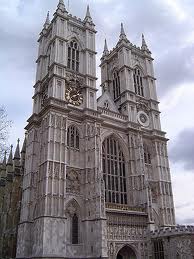Most of you have been writing about the secular nature of churches in England, how they don’t really seem like a spiritual community, and how it is a bit disturbing that all of them come with cafes and gift shops. While I agree with these thoughts, I don’t think that it is necessarily all bad, and I think that we need to consider that we are not seeing the entire picture.
I think that the secularism of the Anglican Church particularly stands out against our visits to the Mandir and the mosque. At these places of worship, people go to pray every day and there are spiritual ceremonies every day as well. They each have schools, child care centers, and service projects that reach out to the community. I can see where we might wonder why we are not seeing the Anglican Church step up to its role as a spiritual and community leader, but remember that we discussed in our first ever class meeting how in these minority communities, religion is very much one and the same with culture, especially in Islam. The difficulties they have assimilating into English culture are due in large part to religion. Religious teachings and traditions have become well ingrained cultural traditions. Anglicanism is a relatively new religion in comparison with Hindu and Islam, and does not play the role of being one and the same with culture like it does in the other communities. And when you are the majority community racially, religiously, politically etc…it doesn’t need to be.
the Mandir, courtesy of it’s website mandir.org
The second point I wanted to make in this post is that Westminster Abbey and St. Paul’s do remember their function as places of worship. I was on the Westminster Abbey tour with the science group. We were there at noon, and at that time an announcement came on that called for a moment of silence. John reminded us that we were in a church, not a museum, and I noticed that nearly everyone visiting the Abbey at that time, tourists included, was respectful of this moment. I also attended Evensong at St. Paul’s and thought that it was a beautiful and moving experience. I think that they balance their two roles as best as they can, and hey, if my church had a café, I would use it. Speaking of places of worship that balance spirituality and tourism, look at Vatican City. No one can argue that this is not a deeply meaningful and spiritual place; Catholics journey from miles around to hear the Pope speak on Christmas, or at any other time of the year really, but it is also a huge attraction, complete with guided tours through St. Peters and rampant pick pocketing.
photo credit: Google Images
photo credit: Google Images. All of these buildings were too big and beautiful for me to take a good picture of them myself.
Finally, the fact remains that we have not been to any small Anglican parishes in specific residential neighborhoods of London. I’m sure that there are religious Anglicans in London who do go to church every Sunday and whose churches run community service projects and functions, but, similar to your local church at home, which also attracts no visitors, these churches probably don’t have history such as the Battle of Hastings and the Great Fire of London surrounding them. We definitely are not seeing the whole picture here, which is why I cannot join in lamenting and expressing disappointment in places like Westminster Abbey or St. Paul’s, or the Anglican Church in general.



